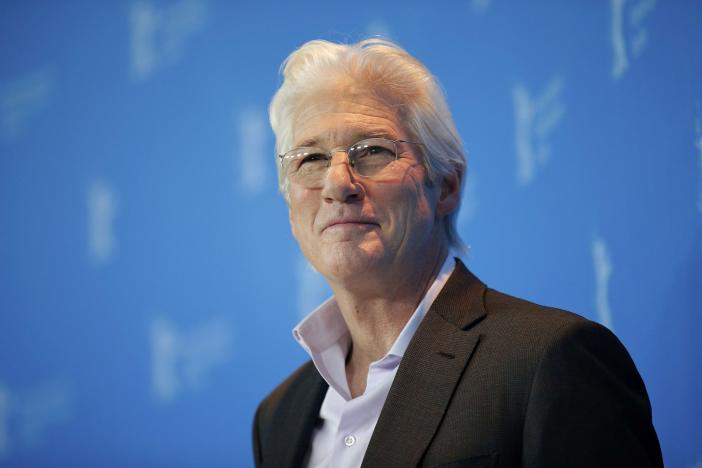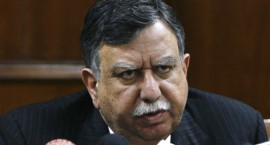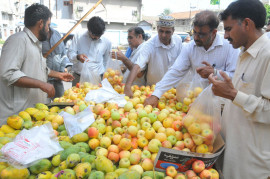
Escalation in prices, particularly those of essential commodities, remains a bee in the government’s bonnet.
What has made inflation a hard nut to crack is the fact that it is supply-side rather than demand-side. Also called stagflation, the supply-side inflation represents an unenviable combination of low or negative growth and upward movement in prices.
Normally, economies face a trade-off between growth and employment on the one hand and inflation on the other. An upsurge in growth drives up aggregate demand and generates jobs, which leads to an increase in the general price level.
By contrast, a downswing in growth dampens aggregate demand and reduces employment, which brings down prices. Hence, governments often have to choose between high growth and low inflation.
At times, however, this trade-off is not available. The economy faces dwindling growth rates and shrinking job opportunities coupled with rising prices – the worst of the two worlds. Stagflation can be caused by natural factors, such as crop failure, a sharp increase in commodity prices, such as oil, or the government’s policy choices.
In the case on hand, the stagflation has more to do with the government’s policy choices than with any other factor. However, those choices were largely constrained by the state of the economy.
Read: Why govts cannot control inflation?
When the PTI government was inaugurated in August 2018, the economy was characterised by a high current account deficit, deteriorating exchange rate, falling foreign exchange reserves and creeping inflation. To handle the external deficit, the government relied on letting the rupee depreciate through a largely hands-off approach.
The logic worked partly as the trade deficit was brought down from $37.58 billion in FY18 to $31.82 billion in FY19 and further to $23.16 billion in FY20.
In first nine months (Jul-Mar) of the current financial year, the trade deficit sat at $20.83 billion. Imports fell from $60.79 billion in FY18 to $54.79 billion in FY19 and further to $44.55 billion in FY20. During July-March FY21, imports sat at $39.51 billion.
Exchange rate adjustment is a double-edged sword, which cuts either way. While depreciation may push up exports depending on their price elasticity of demand, it may also ratchet up domestic prices by restricting imports and raising the cost of inputs and raw material.
Due partly to the fall in trade deficit and partly to an increase in remittances, the current account deficit fell from $19.89 billion in FY18 to $13.43 billion in FY19 and further to $2.96 billion in FY20.
During FY21, the current account turned a surplus and sat at $959 million in the first nine months.
At the same time, the stabilisation policies saw economic growth slip from 5.5% in FY18 to 1.9% in FY19. FY20 saw the economy contract 0.4%.
Agriculture growth slipped from 3.8% in FY18 to 0.6% in FY19 before increasing to 2.7% in FY20. The industrial sector, which grew 4.9% in FY18, contracted 2.27% and 2.64% in FY19 and FY20 respectively.
Thus, three principal factors combined to push the economy towards stagflation. These are growth recession, fall in imports and rupee depreciation.
Controlling inflation
The supply-side inflation is essentially a problem of falling output. The gap between domestic demand and domestic output is filled by imports. But as imports also fell, prices perked up on the back of a rather steep depreciation and periodic increase in prices of utilities, as the government moved to scale down the fiscal deficit.
As a result, the CPI inflation, which was 3.9% at the end of FY18, increased to 6.8% during FY19 and further to 10.7% during FY20. In July-March FY21, the CPI sat at 9.1%
With a view to putting the brakes on inflation, in October 2018, the central bank increased the policy rate by one percentage point to 8.5%, and further by 1.5 percentage points to 10% in December 2018. The discount rate was kept on increasing until it peaked at 13.5%.
It may be noted that exchange rate management, which allowed the domestic currency to depreciate, and the monetary policy, which was aimed at driving up the domestic currency value through higher interest rates, were mutually discordant.
Hence, the monetary policy-induced possible reduction in inflation was offset by the depreciation-induced spike in inflation.
Covid contribution
Come Covid-19. Although the country, or any part of it, was never placed under a full lockdown, the pandemic did contribute to stagflation by hobbling the movement of people and merchandise, and curtailing the potential output.
Finally, cartels, which thrive in an uncertain situation, fished in troubled waters by contriving shortage of some staple products, such as sugar and wheat. Stagflation stumps even the most astute of policymakers. The standard recipe for low growth is fiscal (increase in government spending) and monetary (increase in money supply and cuts in interest rate) expansion, while that for high inflation is fiscal and monetary contraction. Stagflation makes both sets of policies less efficacious.
Expansionary policies in the face of increasing prices stoke inflation, while contractionary policies in the face of low growth rates may make them even lower.
Read more: Inflation skyrockets to 11.1% in April
So, the foremost step towards curing stagflation is for the government or the central bank to target either low growth or high inflation. They can’t profitably target both at the same time. If the priority is to accelerate growth, rather than deflate the price levels, an expansionary monetary policy is in order. Already in recent months, the discount rate has been cut by the central bank from 13.25% in March 2020 to 7% at present, mainly with a view to facilitating businesses in coping with Covid-19.
Luckily for Pakistan, due to exceptionally low interest rates in the United States, the American dollar has depreciated in recent months against a number of currencies including Pakistani rupee (PKR). This has helped ward off pressure on the exchange value of the PKR relative to the greenback.
During the current financial year, some signs of recovery have appeared, as large-scale manufacturing grew 7.45% in first eight months, compared with 2.7% negative growth registered over the corresponding period of FY20. The IMF and World Bank have projected 1.5% and 1.3% growth respectively for Pakistan’s economy in FY21, compared with a more optimistic 3% growth rate forecast by the SBP.
Although still meagre, the projections mark an improvement over the previous year. The current account is also in surplus, which will help stave off pressure on the domestic currency and thus on upward price movement.
However, the long-run solution to stagflation requires an increase in the productivity of factors of production so that attempts to accelerate the growth rate don’t end up stoking inflationary pressures beyond those necessary for anchoring a growing economy. Breaking the collusive powers of the cartels, which rig markets by contriving shortages and bidding up prices, and ensuring competition can also be helpful.
The writer is an Islamabad-based columnist
Published in The Express Tribune, May 3rd, 2021.
Like Business on Facebook, follow @TribuneBiz on Twitter to stay informed and join in the conversation.


1732271743-0/diddy-(45)1732271743-0-165x106.webp)

















COMMENTS (1)
Comments are moderated and generally will be posted if they are on-topic and not abusive.
For more information, please see our Comments FAQ